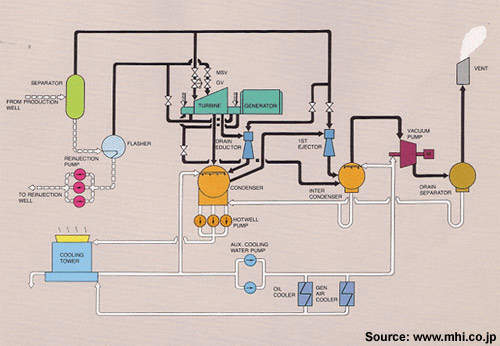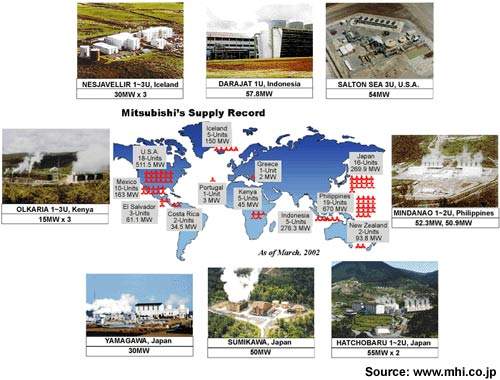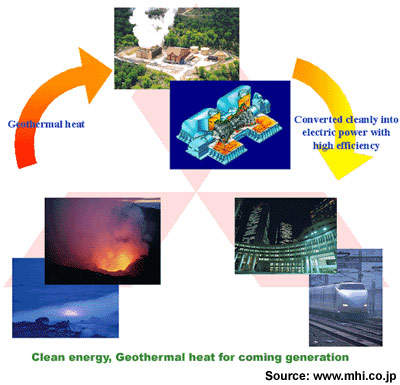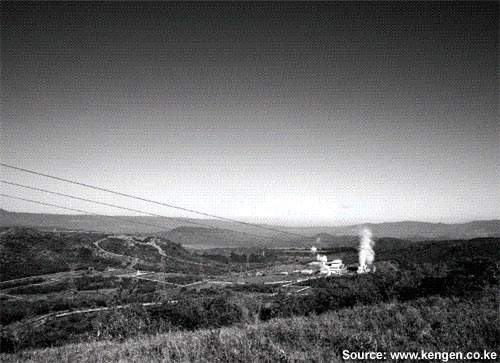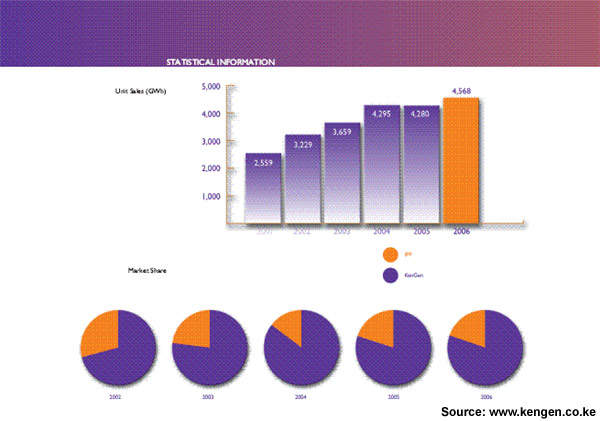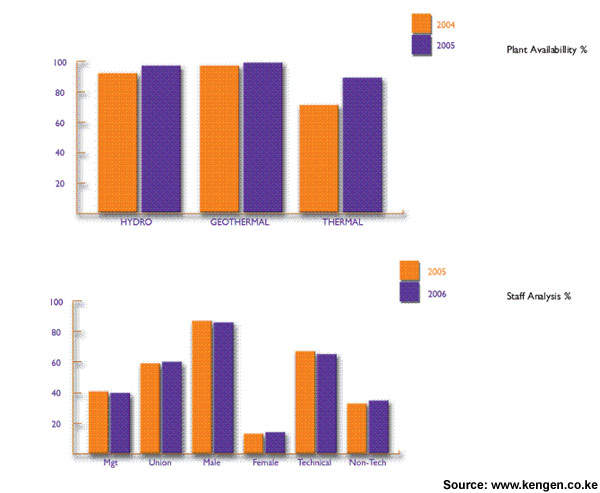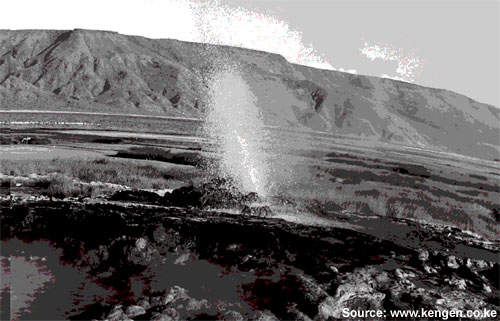Kenya Electricity Generating Company (KenGen) is building a third unit at its Olkaria II geothermal power station. The plant is located about 100km northwest of Nairobi, the nation’s capital. It taps the geothermal field in Kenya’s Rift Valley. The 35MW turnkey expansion is being built by Mitsubishi Heavy Industries (MHI), and should go on-stream by the end of 2009. It will cost around $100m.
Kenya presently obtains more than 75% of its power from hydro. At the moment it has a surplus, but with the expected connection of 150,000 new power consumers annually, this is quickly depleting. The increased geothermal power will help reverse this and will expand Kenya’s programme for rural electrification.
This is the sixth geothermal power plant that MHI has supplied to KenGen. Three 15MW units for Olkaria I went on stream in 1980s, and two 35MW units for Olkaria II in 2003.
GEOTHERMAL POWER IS STABLE AND RELIABLE
Geothermal power is stable, unaffected by weather, and emits no CO2. Generation uses geothermal fluid, a mixture of high-temperature water and steam over 250°C extracted from deep underground reservoirs through production wells. The plant will have a steam turbine, condenser, generator, peripheral equipment, electrical facilities and a control system. The steam extracted from the fluid turns steam turbines.
The Olkaria reservoir is a two-phase liquid dominated one that is overlain by a thin steam-dominated zone 100–200m thick at 240°C. This zone is widest in the southeast and thins in the north. Above the steam zone is a caprock, which marks the top of the reservoir that lies 400–700m below the surface.
The vertical extent of the reservoir has not yet been established but is believed to be of the order of several hundred metres. Temperatures experienced by the wells are generally high (250°C) with a bottom hole temperature of about 300°C. The initial static water level varies from 400–700m.
MHI’s Nagasaki Shipyard and Machinery Works is designing, manufacturing and installing the station. Mitsubishi Electric Corporation will supply a generator, and Mitsubishi Corporation is handling the trade particulars. The company has delivered geothermal plants to 14 countries worldwide, including Kenya, Japan, the US, Iceland and Costa Rica. Their collective power output is about 3,000MW.
ELECTRICITY DISTRIBUTION PROBLEMS
The country experienced massive power rationing in 2000, partly caused by failure to implement planned projects on schedule. The original Olkaria plant increased Kenya’s national power generation capacity at the time to 1,100MW, well above the country’s then peak demand of 820MW. Despite the surplus capacity, however, the country suffers frequent power blackouts due to weak distribution systems.
Kenya Power and Lighting Company has been faced with serious shortages of transformers and high voltage switches. As a result, high voltage fluctuations and power outages have averaged 11,000 per month. Apart from causing material damage, these outages contributed to low productivity, thus affecting overall economic performance. So, an efficient power transmission and distribution system is now of priority concern to the Kenyan Government.
The original plant was built with support of the World Bank, the European Investment Bank and the Federal Republic of Germany. The Kenyan Ministry of Energy discussed with the World Bank for at least $185m to be made available over a period of three years. The funds were planned largely to the upgrading of the distribution system and the Olkaria II extension.
GEOTHERMAL IS KENYA’S BEST ENERGY RESOURCE
Geothermal energy remains Kenya’s most effective resource for competitive electricity production. A sum of at least KShs.3bn (€3m) is planned over five years for geothermal production. The Federal Republic of Germany has also agreed to provide €8.5m.
Kenya has also been discussing accessing electricity from Zambia and Uganda, and aims to access 100MW from Zambia by 2008. The power transmission link with Zambia via Tanzania will enable Kenya to source power from other countries in the south as the demand grows. The Government is also looking to increase private sector participation in the energy sector. It intends to provide incentives to long-term investors in power production and supply.
TECHNICAL CHANGES TO ORIGINAL DESIGN
Sinclair Knight Merz was awarded an overall consultancy contract in 1998 as owner’s engineer and project manager for Olkaria II. This involved engineering design and supervision support on five major contracts – power plant, steam field engineering, site civil works, switchyards and transmission lines.
In the initial phase of the project, design reviews recommended several technical changes, with the cost being justified by through-life value analysis techniques. These included changing the turbine hall structure from concrete to steel and incorporating more modern building materials.
Plant changes included the use of modern canned pumps instead of barometric sealing pits, and a change in the type of cooling tower, saving on both the capital cost of the cooling tower and the civil works associated with a smaller footprint.

